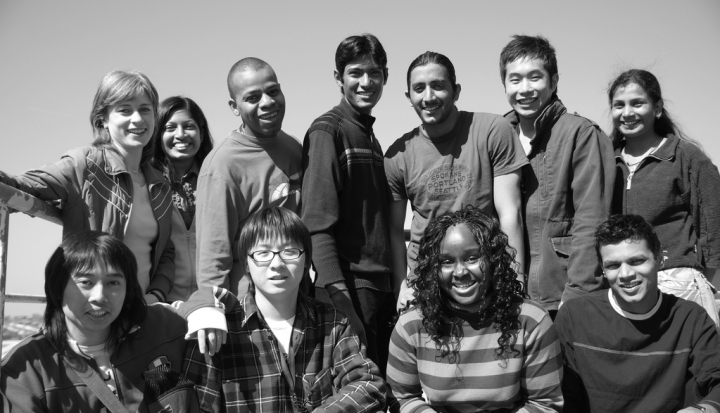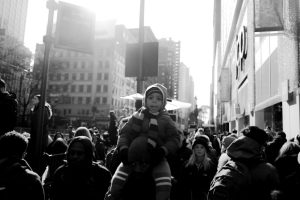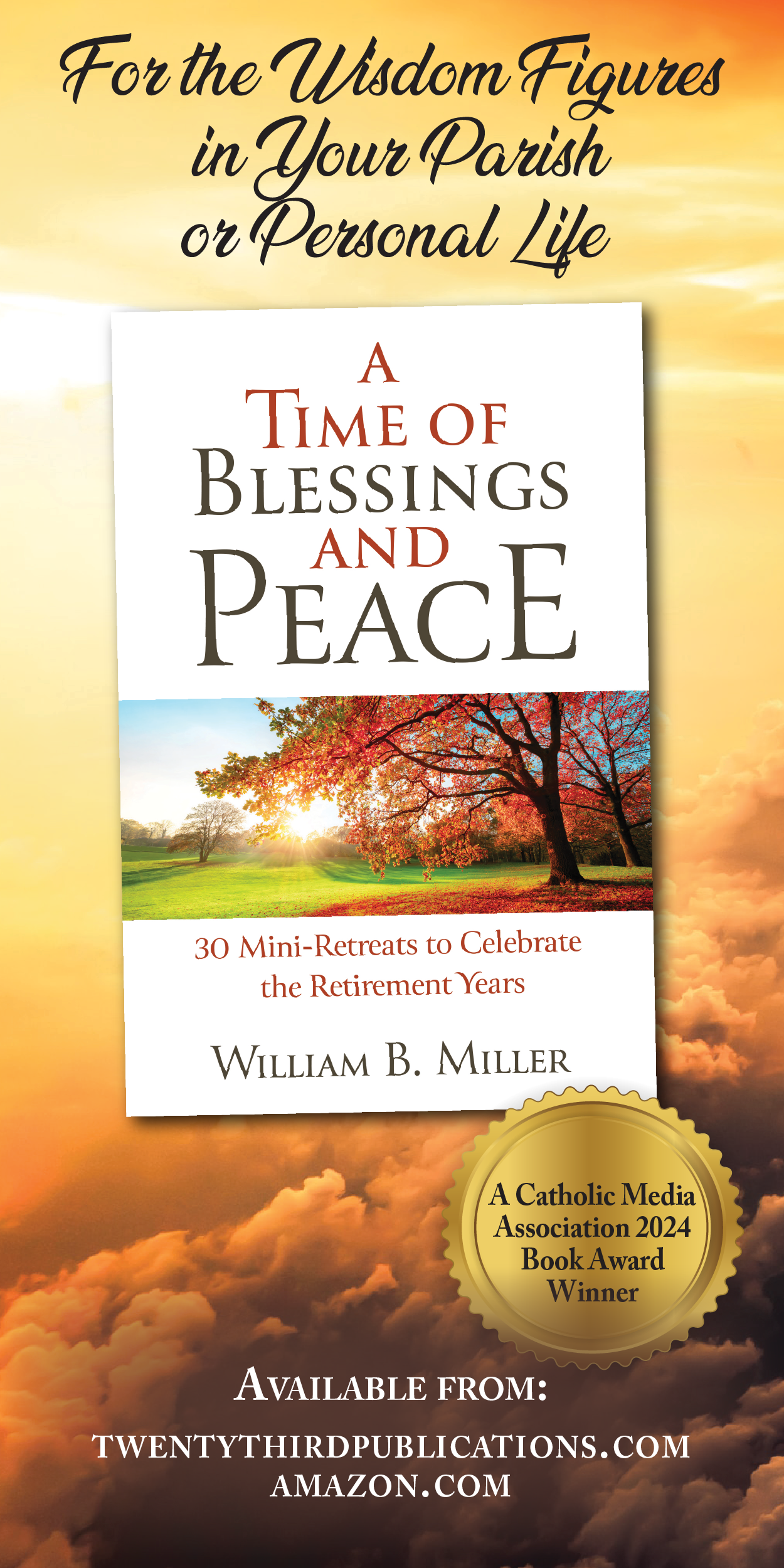By any measure, we are living in the best period of racial experience in American history, exemplified not only by the obvious fact that the president, Barack Obama, is a twice-elected African American, but also that all around us there is evidence of the astonishing social progress that has been made in the last 50 years.
A half century after Martin Luther King Jr.’s “I Have a Dream” speech, African Americans have progressed into positions of visibility and authority in virtually every field of employment. There is growing acceptance of African Americans by other groups socially and intimately. There is also evidence of significant numbers of African Americans gaining economic purchase and power, including a few joining the ranks of the absolute wealthiest, while millions more enjoy middle-class prosperity. And then there is what can loosely be called the “Obama Coalition,” the disparate group of Americans from across the national demographic that banded together in 2008 and 2012 and which was most powerfully observed during crowd shots including Americans from all walks of life during the two election night celebrations.
But this undeniable progress must be paralleled with a reality that illustrates that this is a less than optimum time in American racial experience. While great numbers of African Americans have progressed into what we can loosely call the mainstream of the wider society, equal numbers have been essentially running in place in poverty or losing ground during the post-civil rights era, the disparities of family wealth by group remaining immense and growing. A most distressingly enormous number has become trapped in a hard-to-transcend culture of dispiriting poverty, where segregation, unequal education, economic exploitation (payday loans, food deserts, etc.), gang violence, and an unending cycle of incarceration combine to make everyday life crushingly difficult. They are seemingly unseen unless they gain head-lines for violently criminal activity.
Strained silence
Between these two American realities lies a third, a landscape of societally imposed silences and tensions, where any discussion of racial matters is—at best—strained, contested, and regularly ugly. Two overwhelming examples of this can be seen in the moments President Obama himself stumbled into American racial controversy: First, when he remarked idly upon the furor generated by the arrest of an African American Harvard professor at his home during a misunderstanding with police, and second, his comment, during the fraught aftermath of the teen’s murder, that “If I had a son, he’d look like Trayvon [Martin].” No less a person than Newt Gingrich labeled Obama “disgraceful” for bringing the matter up.
It’s quite a curious situation when the African American president of the United States is shouted down for commenting on racial matters, and if such a silence is the price of having an African American commander-in-chief, then one could not be blamed for contemplating whether any progress had actually been made. The mere mention of the word race can of course inspire in most Americans a sense of weariness, if not exasperation. Whatever group one belongs to—and even that statement, “belongs to,” is not as simple as it may seem on its face—the merry-go-round of race in the United States with its repeated crises, accusations, suspicions, resolutions, and reconciliations seems to exist in a permanent state of unease and disruption. It is a kind of Groundhog Day where lessons are never quite learned, and where understanding and forgiveness is never quite permanent.
In the last few months alone we’ve seen, to highlight a few incidents, protests and counterprotests in Memphis over whether a black majority city should have to honor and to subsidize commemorative parks and memorials of Confederate leaders, including the notorious (and despicable) Nathan Bedford Forrest; discussion, reasoned and unreasoned, as the Supreme Court prepared to rule on portions of the Voting Rights Act and affirmative action; an incident on an airplane where a white CEO slapped a crying 2-year-old African American child in the face and told his white mother to “shut that n—-r baby up”; country singer Brad Paisley and rapper LL Cool J mocked and pilloried for a well-meaning if seriously clumsy attempt to “bridge the divide” in a song; former secretary of state Colin Powell loudly derided by fellow Republicans for stating that, in his opinion, the GOP, in some parts, nurtures “a deep vein of intolerance”; and the president of Emory University, a school that has made sustained efforts to ameliorate a past history of segregation and racism, commenting, quite seriously, that the “three fifths of a man” clause in the Constitution was a model of compromise and good thinking. And more anecdotally, and perhaps more disturbing, the perusal of the comments section of virtually any publication on the Internet gives a clear indication that many Americans have, at best, trouble exchanging views on contentious subject matter—the vitriol is particularly extreme when commentary ventures into the area of race.
So it is safe to say that any discussion of the current state of race in the United States will depend upon how you choose to look at it, which axis you contemplate, what city or state you’re in, who your friends and family members are or are not, who is doing the asking, what day you ask, and which data points you choose from the almost infinite field of possible interpretation. It seems that today, in 2013, we can assemble evidence for almost any narrative about the state of race in America, and as a result that narrative will be in its very nature deceptive, in all directions: Things are better than they look, things are worse than they look, and we don’t want to talk about it.
Sometimes I think we forget how bad things actually were in the old America: African Americans, Latinos, Jews, and Asian Americans were trapped in various forms of legalized, institutional, customary, and structural racism, backed by state and corporate interests as well as religious authorities. And behind all of that, in all sections of the country, was a shadow system of discrimination and violence that had as its most lethal form of intimidation and enforcement the horrific—and generally unpunished—crime of lynching. At one time this system, this way of life, looked as if it would be impossible to overthrow, as it appeared to be the choice and in the perceived best interests of those who controlled the levers of national, state, and local power.
I also think we forget how long and hard a fight it was to begin to overthrow that order, led most famously by courageous African Americans, including, among many, many others; Frederick Douglass, Ida B. Wells, A. Philip Randolph, Whitney Young, Martin Luther King Jr., and Fannie Lou Hamer. This social movement, which included the brave participation and sometimes martyrdom of every American group, along with wrenching economic change and the development of mass media, led to a national self-reckoning that began with Brown v. Board of Education, continued through the Freedom Rides, the March on Washington, and the Civil Rights and Voting Rights Acts, and culminated in the Supreme Court decision Loving v. Virginia, a roughly 15-year sequence that established the full legal citizenship of African Americans (and by extension, the other groups discriminated against).
In an astonishing “only in America” climax, the election of Obama finished a social push in which African Americans went from disregarded peonage to the White House in 50 years, without the sort of bloodshed and death routinely seen during times of such change in other nations.
As the civil rights movement slips into time, we cannot forget what an overwhelmingly great accomplishment that was—and remains. But the passage of time has also revealed that in this progress there remains a great deal that was unaddressed and left undone that has yet to be clearly seen or acknowledged. The simple truth is that it couldn’t have been seen at the time, and whatever we are able to do in the next wave of reform will only reveal and perhaps create yet more work to be done.
And we should not be so naïve (or lazy) as to believe that there are not those who would happily, willingly, turn back the clock to the laws and customs of the past. Complex questions emerge: How do we celebrate what has been accomplished, preserve what has been gained, and measure and work on that which remains to be done? There is a general sense that folks are struggling and doing the best that they can, but what if that’s not good enough?
The next America
I was struck by Asian American Jeremy Lin’s recounting, on a recent episode of 60 Minutes, of the racism he experienced as a rising basketball star over the last 10 years. He was taunted by African American players, dismissed by white coaches, berated by any and all types of fans from the bleachers. Putting aside the personal unfairness of this to Lin, who was able, through strength of character and talent, to transcend this treatment, his experience is a prominent example of how we can no longer conceptualize the American racial problem in the ways we have in the past.
Lin also embodies that our country is not becoming “post-racial”; it is becoming “more racial,” “multiracial,” “for-the-first-time-everybody-is-speaking-up-racial.” It illustrates that our discussion of race is not ending; a new phase is just beginning, a phase when race and its place in American life can and will actually be discussed. We have undergone what scientists refer to as a “paradigm shift”: What was once seen as “normal” in American race relations and custom is no longer seen as normal. There has been a revolution, and substantial progress was made on the previous set of problems. However we now must not only continue to pursue answers, we have to realize that the questions—economic, social, sociological—are different.
Americans are not going to evade this work. It will be difficult and—like most other aspects of our racial evolution—even painful. The post-civil rights, post-Obama status quo is something new in American society, and as it plays out over the next several decades, it will be a bumpy ride at times. One of the consequences of Obama’s presidency, I think—for good and for ill—is that American whites are at the beginning of coming to consciousness of themselves as one group among many in the nation, one group in the mosaic with desires and interests like all the others, instead of as the owners of a definitive mainstream—to which everyone else must aspire. After Obama, America is seen much more as the varied and contentious place that it actually is rather than the sugar-coated confection of bowdlerized memory (Leave It to Beaver, Ozzie and Harriet, etc.) that had for so long been the myth.
Managing this transition to “the next America” will prove to be the most crucial task of the next 20 years, as our previous divisions will prove in time to have been a luxury, a function of an era when—because there was no rapidly aging domestic population, external global economic competition, or ongoing asymmetric war—the waste and noise of racism and racial conflict could be ignored. We cannot, for example, run the risk of racializing the many political negotiations and reforms that are going to be needed in the near future, given the demographic trends that have been much discussed lately. Suddenly, it’s truly in the best interests of everyone to find ways to work out of the trap of the traumatic past, and to resolve the anger, expressed and unexpressed, descending from those past conflicts.
So we face a complex predicament. Back to my questions: How do we celebrate what has been accomplished, preserve what has been gained, and measure and work on that which remains to be done?
In search of a new vocabulary
Before any measurable progress can be made in the prospects of those who remain outside of American prosperity, the first task will be getting past the default that any discussion of race in America devolves into: a grasping for moral high ground. That default—liberals blame the whites of the past, conservatives blame the minorities of the present—is itself a remnant of a different, past time, which is no longer useful. In a very different era with very different prospects, we talk as if it’s still 1963.
There is a need for a more nuanced vocabulary, one that can communicate the specificities and contradictions of 2013, and can acknowledge that we can’t imagine the nation to come using the rhetoric of the past. In fact, those moral insights and exhortations are so often utilized by politicians to evade talking about the current realities and their current failings that I seriously question if that language any longer has its previous authority or force.
Why do anything when you can quote Martin Luther King and thus illustrate your commitment to justice? The veneration of King has become, in the deepest of ironies, a kind of silence. It may be time to face that the language of the civil rights movement, even, perhaps particularly, the language of Martin Luther King, has become a dead language. It has become, I think, a substitute for hard thinking about today, about now, about inner city violence, dysfunctional schools, and public health epidemics that are so different from the challenges of the 1950s and ’60s.
There’s another way that thinking and talking in the old ways is problematic as well: With our love for media and catastrophe, we tend to focus on individual personae and singular events such as Trayvon Martin, as tragic and enraging as it was. Trayvon’s death in effect acts as a distraction from larger problems, as it is easier to feel outrage for him or the Jena Six or the latest exonerated prisoner freed by the Innocence Project than to discuss the organized and systemic inequities that must be confronted if we truly want to improve the lives of those African Americans (and all the others, including poor whites) locked at the bottom of our society. That includes the economic disarray, the educational disparities and unfairness faced by so many children, endemic gang and drug violence, and burgeoning health crises such as Type 2 diabetes, heart disease, kidney disease, obesity, higher infant mortality, shorter life expectancy, and HIV that plague the community in ratios far beyond those of other communities. The numbers of young black males going to prison, and the abuse experienced by many in those prisons, is beyond crisis.
There are very real problems connected to the past and present of racial discrimination, but there are no media frenzies, no months-long discussions on cable TV, no shouted questions to the president as he walks through the Rose Garden—just another kind of silence.
Remedial English
How to begin to break the silence? I have come to the belief that those who are interested in the well-being of our society have to start by being more careful in how we speak about race, in the hope that speaking more carefully will lead to thinking more carefully. Perhaps one of the biggest problems is also the simplest, and the one we most take for granted—accuracy. We speak “racially” in clichés and untruths, and therefore think in clichés and untruths; words as simple as “black” and “white” are used to describe skin color and by extension communities and even worldviews. But they are both inaccurate, literally and figuratively, and therefore set any discussion of race off on a wrong foot. And if that were not enough, each word carries substantial subtext and connotation in our language.
If the most fundamental language we use to describe ourselves and each other is fundamentally inaccurate and carries some of the most profoundly laden casual and delineated value judgments embedded in the English language, aren’t we playing with fire?
There’s another way that our sloppiness with language complicates our ability to negotiate and think about race and what it means for our society and individual lives. As noted by the late British philosopher Isaiah Berlin, different groups and persons regularly use the same words in political conversation, but in fact talk at tragic cross-purposes because those words carry different private values for the users.
When talking about “race,” what are whites, in my judgment, really talking about? Among other things, crime, fear (of crime, of “losing face and place,” of change), the injustice of affirmative action, scarcity. When talking about “race,” what are blacks, in my judgment, really talking about? Among other things, history, an awareness of injustice, hidden and unearned white privilege, despair tied to a sense of destiny being dictated by circumstance and other people. Both sides use the word and topic as a vehicle for anger, relevant or otherwise.
And Berlin has a related insight: When blacks and whites talk about, say, “injustice,” they are often talking about different types of “injustice,” and when they talk about “freedom,” they are talking about different kinds of “freedom.” For example, there is “freedom from,” and there is “freedom to.” Black freedom from white discrimination might contradict white freedom to favor friends. Both are positive values, but when they clash, which prevails? And so on. These sorts of tragic misunderstandings and differences in perspective prevent even accurately describing our issues and problems, and they are far more prevalent than we might at first imagine.
Cleaning up our racial ‘Superfund’ site
There is a concept that comes up again and again in scripture as well as in classical literature: The sins of the fathers are visited upon the children. The strength of this observation is borne through history, not in the sense that we are punished for the sins of our forebears, but rather that we have to live through the implications and realities of the situations their actions have created.
Thus, we are cautioned to study and understand the situations in which we find ourselves, but further, to be extraordinarily careful about the situations we bequeath to our children. Our American forebears have not always been especially careful about the worlds they left for their descendants, but there have been some—like Abraham Lincoln, Harry Truman, Martin Luther King, and Lyndon Johnson—who were willing and able to bend the curve of history and enable a better future.
And that, in my opinion, gives us glimmers of a way forward. What if, instead of discussing (or carping about) race, discrimination, and poverty in the ways that we have the last 30 to 40 years—assessing fault and blame in ever more strident or sophistic ways—we chose to “give up and accept” the disaster on our hands? What if we accepted that the American racial reality is a kind of natural disaster or environmental problem that has been visited upon us, as we would a “Superfund” site or the aftermath of a hurricane?
Something happened, and we—those living now—did not choose or create it, but something needs to be done. In a disaster scenario we focus on those who most need help and what has to, needs to, and can be done. We do not judge or argue—we get on with it, in concrete terms and using the best data and information available.
This is where one can see a large and positive role for the church (and other religious groups) in educating its members and encouraging them to, at the very least, act in non-destructive roles, but better, to act positively in whatever small or large ways are within their individual means.
The church as an institution could also examine its (often silent) role in the past, and determine where it might act as an institution, most obviously in its unmatched role as an educator. The church has successfully educated millions of Latinos and African Americans and served as a bridge for them into mainstream American society. Is it possible to see this as a principal mission?
The plight of those, in one of hundreds of possible examples, in the poorest areas of Chicago—linking what those citizens and their families experienced to the viciousness of Mississippi in the slavery and Jim Crow eras and the rapacious actions of generations of Chicago politicians and businessmen—will never be exactly accounted for or undone. How could they be? But the parsing of blame and responsibility is no longer useful.
If we don’t determine what can be done, given current realities and negative trends, we are looking at some very problematic outcomes: Social disarray beyond the ability of the state’s finite means to ameliorate, social disorder that could become racialized and threaten not only the progress but the very fabric of our multi-ethnic nation. If such outcomes emerge, we will find that we will have, literally, nothing to talk about.
This article appeared in the July 2013 issue of U.S. Catholic (Vol. 78, No. 7, pages 12-17).














Add comment